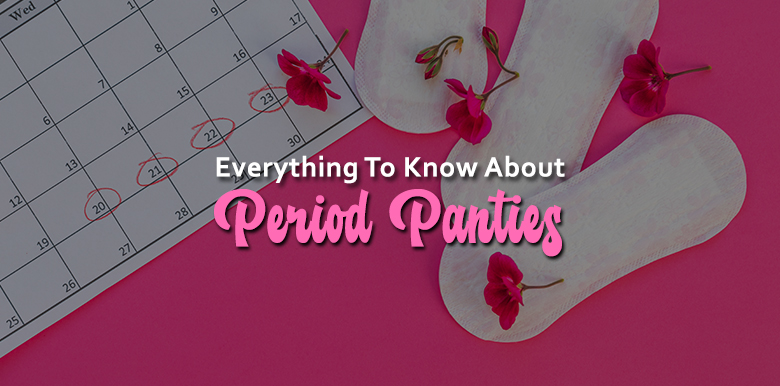Can you imagine, a world where you dont have to wear uncomfortable pads and tampons. We can go about without the care in the world when mother nature cursed us with the visit from the lady flo every month. Yes, it is now possible ladies!

Periods
With a layer to soak up your monthly flow, and another to stop it from staining your clothes, they’re less of a nappy and more of a high-tech textile.
But how do these undies stack up against, say, pads and tampons when it comes to comfort and protection from leaks? We enlisted a research scientist to answer all our period underwear questions. Making period-proof undies possible.
Even on your heaviest day of menstruation, you’re probably bleeding far less than you think.
According to CSIRO’s Sally Hutchinson, women only emit a few teaspoons of blood in a day.
So, is it possible for a pair of knickers to soak up said teaspoons without you feeling — or smelling — the viscous liquid?
Apparently, yes. In fact, depending on the pair you choose, you could be holding up to two tampons-full of blood. And more on the odour factor in a minute.
How does period underwear work?
Period underwear is made up of three layers at least.
The inner layer — that’s the layer next to the skin — is a knitted layer that wicks moisture away from the body quickly. It’s generally got a finish on it that makes it water repellent, but it’s got lots of channels in it that allow fluid to move through it and move away from the body.
Next up is a super absorbent middle layer. It’s a water-loving material so it’s able to hold on to the fluid. Then the outer layer is water-impermeable, so it stops the fluid from leaking onto your clothes.
Importantly, each of those layers are breathable.
Depending on which brand you opt for, your period panties could feature a mix of bamboo, cotton or merino wool or synthetic fibres.
How trustworthy are these things?
A Vancouver-based company was one of the first to make reusable period panties in the mid-1990s, but since then the technology has come a long way.
Today, the knickers come in all shapes and sizes: from G-strings and boylegs to waist-high briefs.
But the level of absorbency will vary between pairs.
Generally speaking, more fabric equals more protection from leakage. Even so, it’s important to read the label to have an informed expectation about whether a certain pair will better serve you on a light- or a heavy-flow day.
Unlike a tampon or sanitary pad, you can’t just change your period underwear halfway through the day. (Well, you could, but then you still need to transport them home for washing.) So, it’s important to wear a pair that has you covered for your nine-to-five.
Why underwear fit count?
Between sucking up your blood, leaving you dry, and stopping liquid from leaking onto your clothes, period panties are doing a lot of things at once.
That’s why it’s important you get the right size for you.
They need to be relatively snug to prevent any side-leg leakage. Of course, if you choose a too-tight pair, they could be uncomfortable and less able to deal with a heavy flow.
The market for period underpants isn’t saturated yet, but there are some brands catering to girls and tweens.
One American company offers two levels of absorbency in girls’ sizes (starting from 8-10), and they’re looking to create period-proof swimwear for teens.
Wear, wash, wait…
If you’re purchasing a pair of period underwear, heed the washing instructions as they’ll help you get the longest wardrobe life.
As a general rule of thumb:
1.Rinse them in cold water until the water starts to run clear;
2.Put them in a cold machine wash, avoiding fabric softener as it breaks down the natural fibres;
3.Hang them out to dry.
Period panties can take between 24 to 48 hours to dry, so make sure you have a few pairs — or some sanitary product alternatives — to get you through your cycle.
